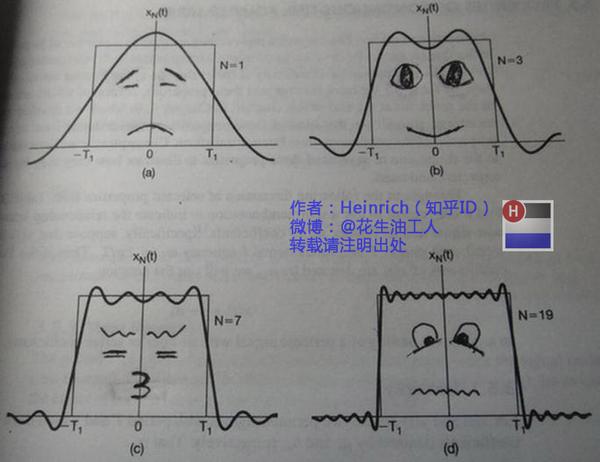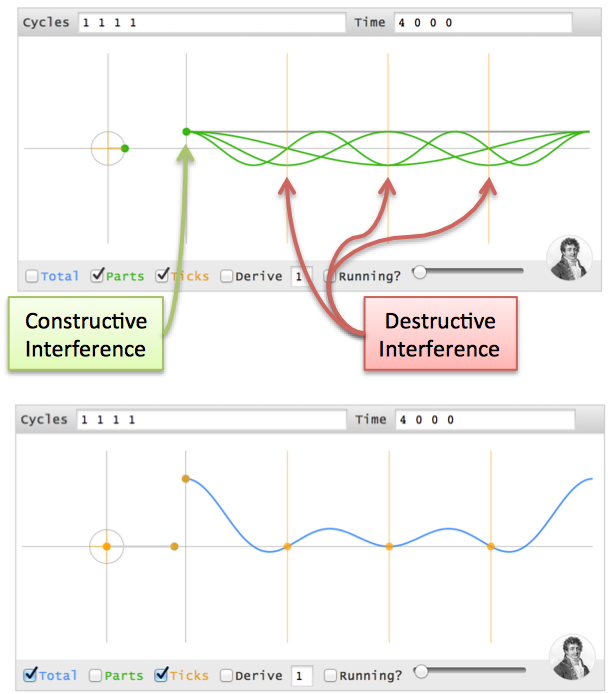-
Notifications
You must be signed in to change notification settings - Fork 461
New issue
Have a question about this project? Sign up for a free GitHub account to open an issue and contact its maintainers and the community.
By clicking “Sign up for GitHub”, you agree to our terms of service and privacy statement. We’ll occasionally send you account related emails.
Already on GitHub? Sign in to your account
@ShawnLeesr @好东西传送门 传送门传送门,给找一些好到逆天的1.信号处理,2.傅里叶变换3.小波变换的入门资料吧。希望能够大致满足这么些要求[嘻嘻]: 1.解释了每一技术在提出时的动机(motivation),如小波变换2.self-contained或给出省略内容的reference3.数学严密,并给出pertinent的例子。谢谢! #198
Comments
概念http://en.wikipedia.org/wiki/Signal_processing Signal processing is an area of systems engineering, electrical engineering and applied mathematics that deals with operations on or analysis of analog as well as digitized signals, representing time-varying or spatially varying physical quantities. http://en.wikipedia.org/wiki/Fourier_transform The Fourier transform (English pronunciation: /ˈfʊrieɪ/), named after Joseph Fourier, is a mathematical transformation employed to transform signals between time (or spatial) domain and frequency domain, which has many applications in physics and engineering. http://en.wikipedia.org/wiki/Wavelet A wavelet is a wave-like oscillation with an amplitude that begins at zero, increases, and then decreases back to zero. http://en.wikipedia.org/wiki/Wavelet_transform In mathematics, a wavelet series is a representation of a square-integrable (real- or complex-valued) function by a certain orthonormal series generated by a wavelet. |
傅立叶变换http://songshuhui.net/archives/50111 不确定性原理的前世今生 · 数学篇(一) http://zh.wikipedia.org/wiki/%E5%82%85%E9%87%8C%E5%8F%B6%E5%8F%98%E6%8D%A2 傅里叶变换(法语:Transformation de Fourier、英语:Fourier transform)是一种線性的积分变换,常在将信号在时域(或空域)和频域之间变换时使用,在物理学和工程学中有许多应用。 http://zhuanlan.zhihu.com/wille/19763358 韩昊 傅里叶分析之掐死教程(完整版)更新于2014.06.06 http://betterexplained.com/articles/an-interactive-guide-to-the-fourier-transform/ An Interactive Guide To The Fourier Transform -- (邹帆 推荐: 回答这个问题怎么能不提及这篇牛叉而又浅显易懂的文章呢?) 更多内容:
|
小波分析http://zh.wikipedia.org/wiki/%E5%B0%8F%E6%B3%A2%E5%88%86%E6%9E%90 小波分析(wavelet analysis)或小波转换(wavelet transform)是指用有限长或快速衰减的、称为母小波(mother wavelet)的振荡波形来表示信号。该波形被缩放和平移以匹配输入的信号。 傅里叶变换是全局的变换,函数的各个点的值都对变换后的结果有影响。小波使用的是局部基,对某个基的系数来说,函数只有在这个基的支撑上的点才对该系数有影响。这就导致小波不仅包含频率信息(由基的频率反应出来),也包含时间信息(由基所在的局部时间轴位置反应出来)。
Windstorm《小波变换和motion信号处理》
http://www-math.mit.edu/~gs/papers/amsci.pdf Wavelets
http://users.rowan.edu/~polikar/WAVELETS/WTtutorial.html The Wavelet Tutorial by ROBI POLIKAR
更多内容看:
|
|
http://www.zhihu.com/question/20301560 为什么在信号处理中只用傅立叶变换和小波变换? -- 当然不止. 讲了这两种方法的基本思想,还有相关引用。 以下摘录来自“王昱博,信号处理博士僧”的回答 在傅里叶变换中,如果一个信号在实数域满足勒贝格可度量条件(Lebesgue-measurable)则这个信号的傅里叶变换收敛。通过傅里叶变换我们可以看到的是信号的时域特征被完全的变换到了频率域。这时在时域中不明显的周期性变化被直观的反应到了对应的频率域。数学上这样的变换是没有问题的,可是如果信号有非稳定性(non-stationary)则对应傅里叶变换不能得到信号随时间所产生变化的变化趋势。例如我们录制一个某人一分钟的演讲,通过傅里叶变换我们可以知道这个信号的所有频率分量分布,可是如果要知道某个音素的频率特征则无法得到。因为整个时域的信号被完全转移到了频率域。 为了得到时间-频率分布信息,第一个被使用的方法是Gabor在1946(Theory of communication 但是这个方法的弊端也是很明显的,如果要更好的时域分辨率,那么这个窗函数需要尽可能的短。可是一个短的窗函数可以保留的数据样点就少,这是频率分辨率就很低。为了提高频域分辨率,就要加长这个窗函数,但是时域分辨率就会降低。这就是经典的理论中的时间频率海森博格不确定性(Mallat, S., a Wavelet Tour of Singal Processing,Elsevier, 2009)。 小波变换的完备性证明由Daubechies(The wavelet transform, time-frequency localization and signal analysis,IEEE Transactions on Information Theory, IEEE, 1990, 36, 961-1005)在1990年代证明完后得到了大规模的应用。不同于傅里叶变换中信号被分解为三角函数的叠加,小波变换中使用母小波(mother wavelet)为模板,整个变换通过伸缩和平移这个母小波来得到。在低频域中,母小波被压缩,时域分辨率高,高频域中,母小波被拉伸,频率分辨高。由于小波变换的这种特性,它被广泛的用于需要时间频率分析的信号处理当中。 |
|
http://see.stanford.edu/see/lecturelist.aspx?coll=84d174c2-d74f-493d-92ae-c3f45c0ee091 |
|
http://ocw.mit.edu/courses/mathematics/18-327-wavelets-filter-banks-and-applications-spring-2003/lecture-notes/ Wavelets, Filter Banks and Applications (MIT online course) |
|
问: @ShawnLeesr 给找一些好到逆天的 1.信号处理 2 傅里叶变换 3.小波变换的入门资料吧 答: 资料整理 http://memect.co/KHsdRuF 推 @Heinrich_DMU 傅里叶分析之掐死教程。进阶有Stanford傅立叶变换课(Brad Osgood) http://memect.co/foPOGQx , MIT小波分析课(Gilbert Strang) http://memect.co/Xylh9f7 请指正补充 |











http://www.weibo.com/2909326712/Bnpuqba1z
The text was updated successfully, but these errors were encountered: